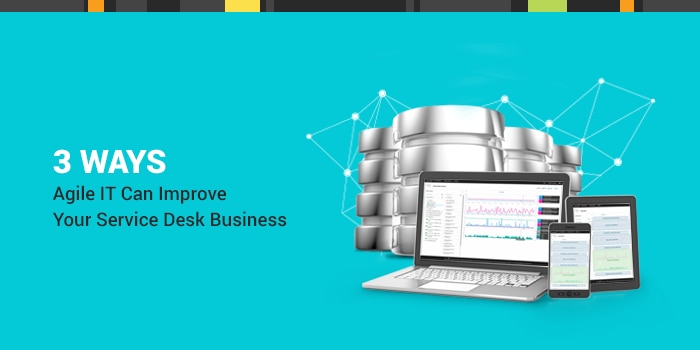According to
CIO, 96% of organizations were using the cloud in 2018. That’s a convincing number, which makes it surprising to hear resistance to the cloud from some of today’s business leaders. Common concerns may include data breaches, data loss, and faulty disaster recovery plans. If you’re still skeptical of cloud software, let’s start with a quick overview of what we mean by the cloud, the primary benefits that so many companies have already realized, and how IT service management (ITSM) can be an ideal entry point for companies dipping their toes into the cloudy waters.
The Cloud vs. On-Premises
First, let’s start with a few definitions. The cloud can be both a single and multi-tenant platform. For
multi-tenancy, one instance of software runs on the cloud service provider’s servers. It’s in continuous deployment, which means licensed users can continue working in the cloud while upgrades are being made. It also means new versions, releases, or launches are available to all those who use the cloud-based tool, hence the term multi-tenancy. Though all users run on a single instance, the data is totally separated for each account. Single-tenant cloud software operates within individual instances, which means updates and maintenance are still unique to each instance.
On-premises software is exactly what it sounds like—the software servers and data are physically right where your business is, giving you greater control. If there’s an update that needs to be made in your ticketing system, for example, that change must be made in house. These updates can be more time-consuming and require valuable personnel resources.
Many organizations are using a combination of cloud and on-premises software. This hybrid cloud approach has become popular as business leaders recognize the advantages of the IT cloud, but take a step-by-step approach to the transition. For some businesses, it may not be feasible to shift everything to the cloud, but it's worth considering the advantages that cloud-based technology offers. Here are four benefits the cloud can offer your organization.
Key Benefits of the Cloud
More Bang for Your Buck
While many cloud-based SaaS solutions come with an ongoing license fee, technicians and employees get constant upgrades with limited maintenance needed. A large lump sum of money is usually needed upfront with on-premises, and upgrades and maintenance are the responsibility of the business. This flexibility and scalability can lend cloud-based tools to being more cost-effective—allowing the software to grow as your organization’s needs grow.
Keeping Security Risks at Bay
Gartner predicts only 5% of cloud security breaches will be the service provider’s fault through 2020. There are no definitive, inherent security risks in the nature of cloud-based servers. Organizations still must manage employee access to data and applications in a cloud environment, just as they would an on-premises application. With a focus on strong cloud practices and experienced systems managers, cloud-based IT can help shore up security concerns.
Latest and Greatest Features at Your Fingertips
As mentioned before, the cloud is in continuous deployment. With continuous deployment, downtime doesn’t need to be scheduled for upgrades when new features are available. This means employees can enjoy the latest technology as soon as it’s ready.
Out of the Line of Fire
Let’s say there’s a hurricane that you have to work through. Cloud-based software can remain up and running through many of nature’s surprises at your company headquarters, allowing your teams to continue working with limited interruptions. With on-premises tools, if those interruptions do occur—let’s say a flood happens in your office—it can result in destroyed equipment leading to downtime and costly repairs. With the cloud, that same flood is unlikely to affect your business since those servers are hosted elsewhere. The cloud provides greater flexibility for backup options and allows IT professionals to resolve problems from wherever they are.
ITSM as an Ideal Gateway to the Cloud
These benefits are particularly important for an
ITSM solution because it supports the organization’s entire technology environment. The
service desk enables service providers to track employee requests and handle employee-related issues.
The three key benefits to having service desk in the cloud are:
- Provides a centralized, easy to maintain, and disaster-proof location to support your ITSM strategy
- Helps reduce costs and time spent on maintaining a service desk solution
- Ensures employees have up-to-date technology supporting their needs
Let’s say the solution launches a new
live chat feature to quickly connect employees to IT support or a new way to automate a process for service delivery on the backend. Those features are available to technicians and employees right away. An on-premises solution might require a manual upgrade to a new version. This process could take a lot of time and resources, and vendors will likely hold those updates to bundle them in new versions on a limited release schedule.
If you’re still unsure if the cloud is an ideal fit for your organization, explore our whitepaper:
Smart Questions for Your SaaS Vendor.








